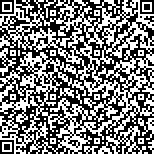| Quote
: |
尹鸿智,赵娟,刘倩,金佳燕,常小荣,钟欢,刘密.针刺对慢性萎缩性胃炎大鼠“足三里”穴区HRH2、SP及炎性因子表达的影响[J].湖南中医药大学学报英文版,2021,41(2):259-264.[Click to copy
] |
|
| |
|
|
| This paper
:Browser 2676times Download 1043times |
| 针刺对慢性萎缩性胃炎大鼠“足三里”穴区HRH2、SP及炎性因子表达的影响 |
| 尹鸿智,赵娟,刘倩,金佳燕,常小荣,钟欢,刘密 |
| (湖南中医药大学, 湖南 长沙 410208;湖南中医药大学, 湖南 长沙 410208;浏阳市中医医院, 湖南 浏阳 410300) |
| 摘要: |
| 目的 观察针刺对慢性萎缩性胃炎(chronic atrophic gastritis,CAG)大鼠及正常大鼠“足三里”穴区组胺H2受体(histamine H2 receptor,HRH2)、P物质(substance P,SP)及炎性因子(IL-6、IL-1β、TNF-α)的影响,并判断两者间是否存在差异。方法 :将32只SD大鼠随机分为正常组、模型组、正常+针刺组和模型+针刺组,每组8只。采用1-甲基-3-硝基-1-亚硝基胍(1-methyl-2-nitro-1-nitrosoguanidine,MNNG)+乙醇灌胃+饥饱失常法建立大鼠CAG模型。针刺组每日治疗1次,每次20 min,连续针刺14 d。干预结束后,运用HE染色法观察胃组织病理学变化,运用免疫组化(immunohistochemistry,IHC)检测"足三里"局部穴区HRH2、SP、IL-6、IL-1β及TNF-α的表达。结果 造模后胃组织病理形态改变显著,光镜下可见大量炎症细胞浸润,腺体萎缩且结构紊乱,纤维组织增生充填,并伴有散在出血点,符合CAG病理诊断标准。IHC染色IOD值显示,与正常组相比,模型组、正常+针刺组均能升高局部穴区HRH2表达(P<0.01);与模型组相比,模型+针刺组可以显著上调穴区组织SP表达(P<0.01)。对于炎性因子而言,与正常组相比,模型组均能上调IL-6、IL-1β、TNF-α表达(P<0.05或P<0.01),正常+针刺组可使IL-6表达上调(P<0.01);与模型组相比,模型+针刺组可以降低IL-6、IL-1β表达(P<0.05),而升高TNF-α表达(P<0.01)。结论 针刺能对正常和CAG状态下大鼠“足三里”穴区HRH2、SP及炎性因子的表达产生影响,且所产生的生物学效应具有一定趋势,跟是否处于疾病状态有关。 |
| 关键词: 慢性萎缩性胃炎 针刺 组胺H2受体 P物质 炎性因子 |
| DOI:10.3969/j.issn.1674-070X.2021.02.018 |
| Received:October 19, 2020 |
| 基金项目:国家重点基础研究发展计划(973计划)项目(2015CB554502);国家自然科学基金项目(81574082);湖南省科技人才托举工程项目(2019TJ-Q04);湖南省“芙蓉学者奖励计划”(湘教通[2020]58号);湖南省高层次卫生人才“225”工程培养项目(湘卫函[2019]196号);湖南省121创新人才培养工程(湘人社函[2019]192号) |
|
| Effect of Acupuncture on the Expressions of HRH2, SP and Inflammatory Factors in “Zusanli” (ST36) Acupoint Areaof Chronic Atrophic Gastritis rats |
| YIN Hongzhi,ZHAO Juan,LIU Qian,JIN Jiayan,CHANG Xiaorong,ZHONG Huan,LIU Mi |
| (Hunan University of Chinese Medicine, Changsha, Hunan 410208, China;Hunan University of Chinese Medicine, Changsha, Hunan 410208, China;Liuyang Hospital of Traditional Chinese Medicine, Liuyang, Hunan 410300, China) |
| Abstract: |
| Objective To observe the effect of acupuncture on the expressions of histamine H2 receptor (HRH2), substance P (SP) and inflammatory factors (IL-6, IL-1β, TNF-α) in the "Zusanli" (ST36) acupoint area of chronic atrophic gastritis (CAG) rats and normal rats, and to determine whether there is any difference between them. Methods 32 SD rats were randomly divided into the normal group, the model group, the normal + acupuncture group and the model + acupuncture group, with 8 rats in each group. The CAG model of rats was established by 1-methyl-2-nitro-1-nitrosoguanidine (MNNG) + ethanol gavage + hunger and satiety disorder. The acupuncture group was treated with acupunctureonce a day, for 20 minutes each time for 14 days. After intervention, the changes of gastric histopathology were observed by HE staining, and the expressions of HRH2, SP, IL-6, IL-1β and TNF-α were detected by immunohistochemistry (IHC). Results The pathological morphological changes of gastric tissues were significant after the model construction. Under light microscope, a large number of inflammatory cells could be seen, the glands were atrophied and disorganized in structure, and the fibrous tissue was proliferated and filled, accompanied by scattered bleeding points, which met the CAG pathological diagnostic criteria. The IOD value of IHC staining showed that compared with the normal group, the expression of HRH2 of local acupoint area was increased in the model group and normal + acupuncture group (P<0.01); compared with the model group, the model + acupuncture group significantly increased the expression of SP of acupoint area (P<0.01). For inflammatory factors, compared with the normal group, the model group increased the expressions of IL-6, IL-1β and TNF-α(P<0.05), and the expression of IL-6 in the normal + acupuncture group could be up-regulated (P<0.01); compared with the model group, the expressions of IL-6 and IL-1β in the model + acupuncture group were decreased (P<0.05), while the expression of TNF-α was increased (P<0.01). Conclusion Acupuncture can affect the expressions of HRH2, SP and inflammatory factors in the "Zusanli" (ST36) acupoint area of rats under normal and CAG pathological conditions, and the biological effect has a certain trend, which is related to whether the rats are in the state of disease. |
| Key words: chronic atrophic gastritis acupuncture histamine H2 receptor substance P inflammatory factors |
|

二维码(扫一下试试看!) |
|
|
|
|


